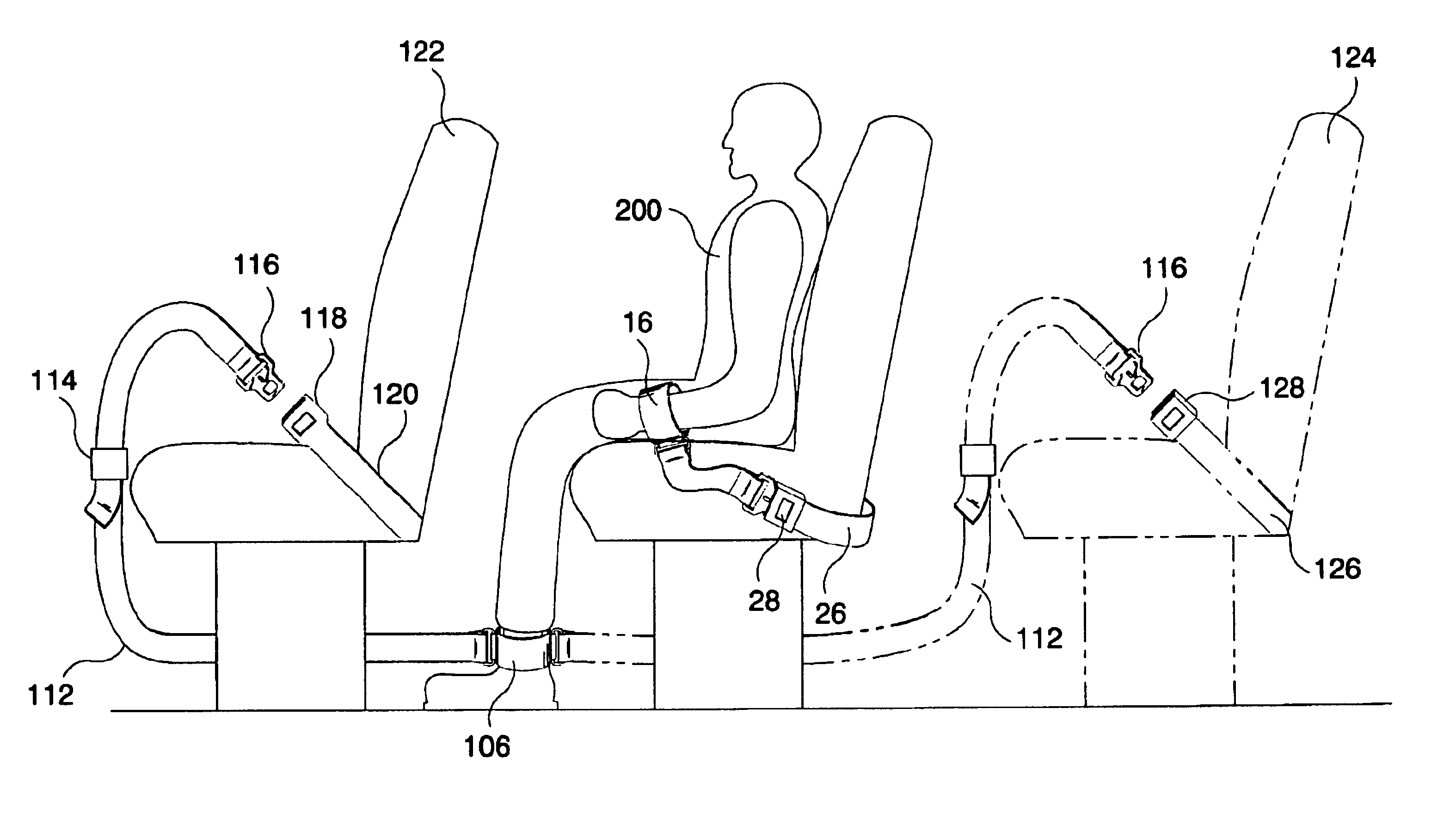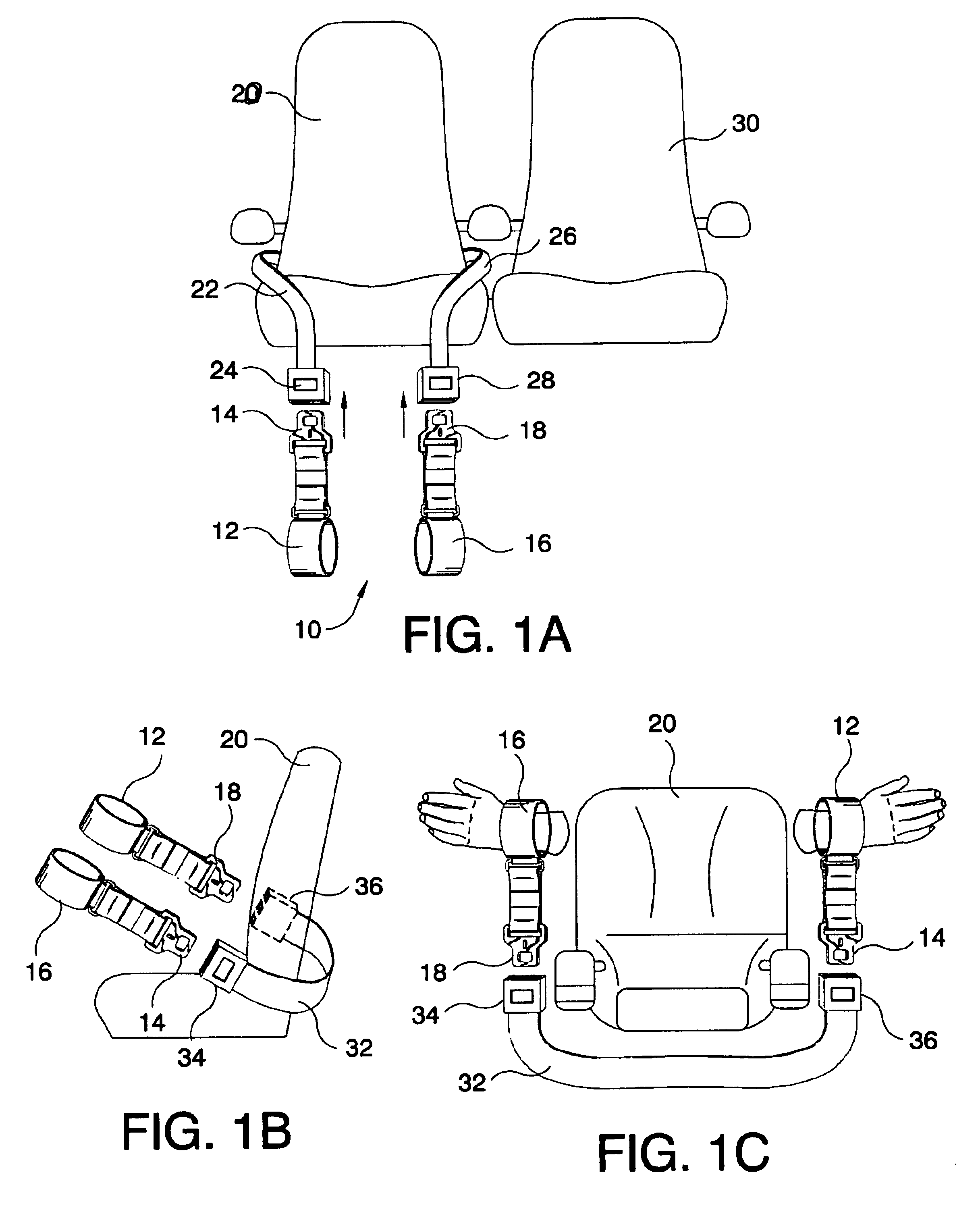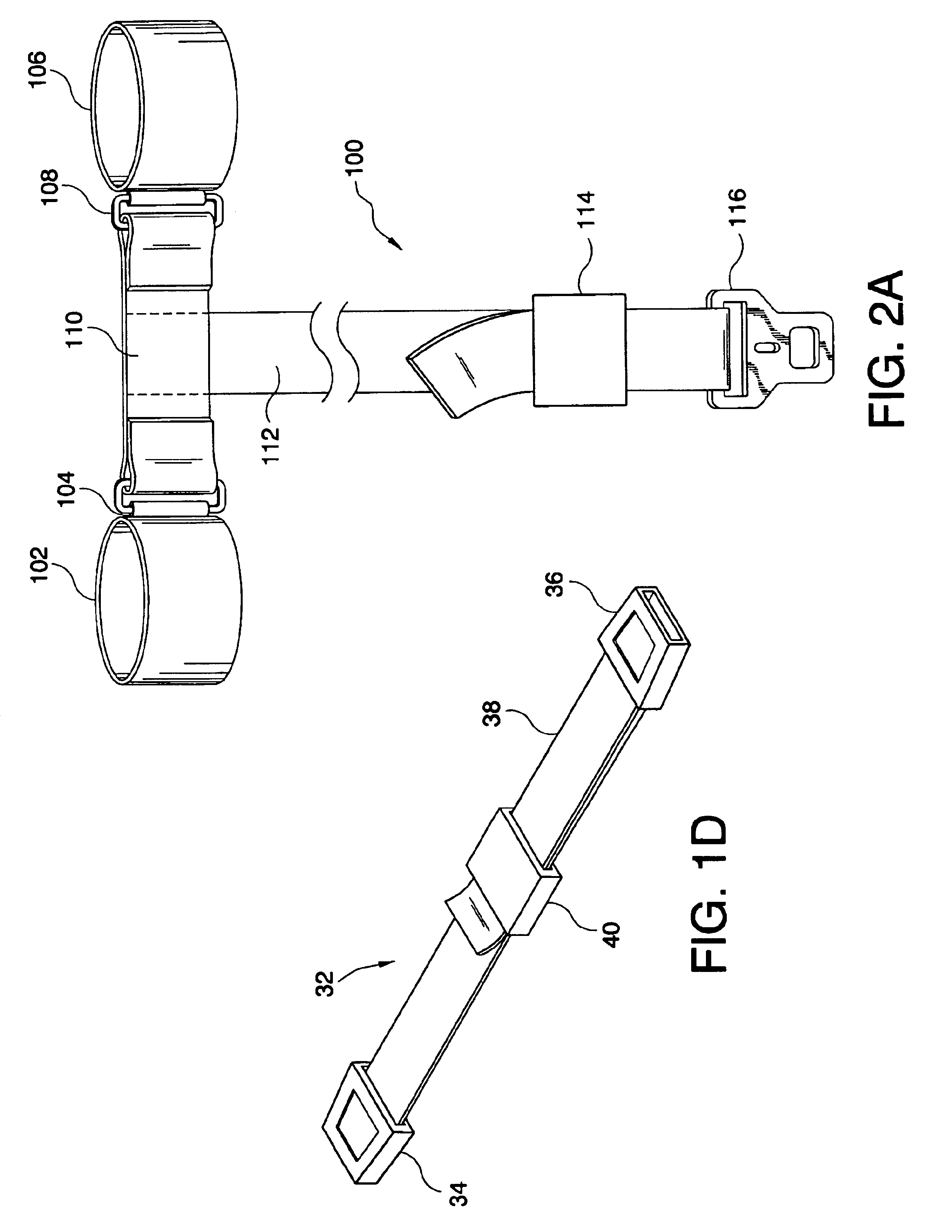Rapid deployment seat-based releasable soft restraint system and method
a soft restraint system and seat technology, applied in the field of soft mechanical restraint systems, can solve the problems of emotional disturbed and/or intoxicated passengers getting out of control, affecting the safety of passengers, and affecting the comfort of passengers, etc., and achieves the effects of quick and easy removal, quick and easy application, and convenient transportation and us
- Summary
- Abstract
- Description
- Claims
- Application Information
AI Technical Summary
Benefits of technology
Problems solved by technology
Method used
Image
Examples
first embodiment
Referring now to FIG. 2A, the leg restraint system 100 of the present invention is shown. The leg restraint system 100 includes a first ankle cuff module 102, a second ankle cuff module 106, and an ankle interconnect 110 therebetween. The ankle interconnect 110 may be a length of flat flexible webbing (for example composed of nylon or similar material). Preferably, the cuff modules 102 and 106 are the circular cuff modules described in the co-pending commonly assigned U.S. patent application entitled “Soft Circular Restraint Apparatus and Method”, which is hereby incorporated by reference in its entirety. However, the leg restraint system 100 may be utilized with a set of any other generally circular cuff modules (for example, any commercially available resilient cuff restraints) capable of connecting to an interconnect device. It should be noted that the cuff modules 102, 106 are shown in a simplified view and may include additional elements (such as locking mechanisms) that are no...
second embodiment
While the leg restraint system 100 can be released relatively quickly by disengaging the connection member 112 from the seat to which it is connected, in certain cases, such as in a vehicle emergency, or in a medical emergency, the EDP must be released from the leg restraint system 100 immediately. Referring now to FIGS. 3A and 3B, the leg restraint system 100 is shown as a leg restraint system 250. The leg restraint system 250 is substantially similar to the leg restraint system 100 in construction and operation, and is utilized in a similar manner (for example, as shown in FIG. 2B), except that the leg restraint system 250 includes a quick release mechanism that enables the EDP's legs to be instantly freed from the leg restraint system 250.
The leg restraint system 250 includes a first ankle cuff module 252 having a first rigid loop 254 disposed perpendicular to its outer surface, a second ankle cuff module 256 having a second rigid loop 256 disposed perpendicular to its outer surf...
PUM
 Login to View More
Login to View More Abstract
Description
Claims
Application Information
 Login to View More
Login to View More - R&D
- Intellectual Property
- Life Sciences
- Materials
- Tech Scout
- Unparalleled Data Quality
- Higher Quality Content
- 60% Fewer Hallucinations
Browse by: Latest US Patents, China's latest patents, Technical Efficacy Thesaurus, Application Domain, Technology Topic, Popular Technical Reports.
© 2025 PatSnap. All rights reserved.Legal|Privacy policy|Modern Slavery Act Transparency Statement|Sitemap|About US| Contact US: help@patsnap.com



